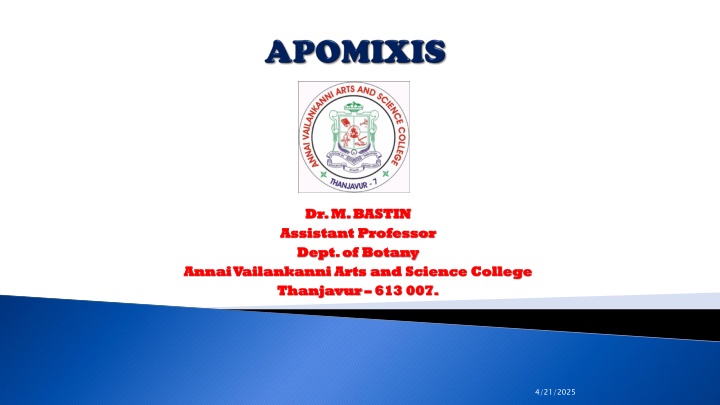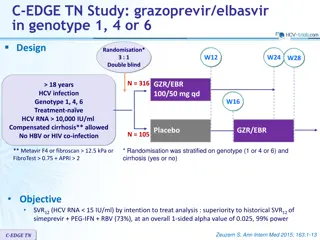
Apomixis in Plants: A Detailed Overview
Learn about apomixis, a form of asexual reproduction in plants that replaces sexual reproduction without fertilization. Explore its types, terminology, and significance in the plant kingdom.
Download Presentation

Please find below an Image/Link to download the presentation.
The content on the website is provided AS IS for your information and personal use only. It may not be sold, licensed, or shared on other websites without obtaining consent from the author. If you encounter any issues during the download, it is possible that the publisher has removed the file from their server.
You are allowed to download the files provided on this website for personal or commercial use, subject to the condition that they are used lawfully. All files are the property of their respective owners.
The content on the website is provided AS IS for your information and personal use only. It may not be sold, licensed, or shared on other websites without obtaining consent from the author.
E N D
Presentation Transcript
Dr. M. BASTIN Dr. M. BASTIN Assistant Professor Assistant Professor Dept. of Botany Dept. of Botany Vailankanni Arts and Science College Arts and Science College Thanjavur Thanjavur 613 007. 613 007. Annai Annai Vailankanni 4/21/2025
Apomixis was defined by Hans Winkler What is apomixis? Replacement of the normal sexual reproduction by asexual reproduction, without fertilization. Thus "normal asexual reproduction" of plants, such as propagation from cuttings or leaves, has never been considered to be apomixis, Replacement of the seed by a plantlet or Replacement of the flower by bulbils are types of apomixis. Apomictically produced offspring are genetically identical to the parent plant.
In flowering plants, the term "apomixis" is commonly used in a restricted sense to mean agamospermy, i.e. clonal reproduction through seeds. Apogamy and apomixis are related terms Both refer to the formation of sporophytes by parthenogenesis of gametophyte cells.
1. Recurrent plant because meiosis was not completed. It generally arises either from an archesporial cell or from some other part of the nucellus. 1. Recurrent apomixis In this type, the megagametophyte has the same number of chromosomes as the mother apomixis: 2. haploid embryo sac megagametophyte is formed. The new embryo may then arise either from the egg (haploid parthenogenesis) or from some other cell of the gametophyte (haploid apogamy)." 2. Nonrecurrent In this type "the megaspore mother cell undergoes the usual meiotic divisions and a Nonrecurrent apomixis apomixis: :
3) Adventive Also called nuclear embryony or sporophytic apomixis. There might be embryo sac in ovule, but embryos do not arise from the cells of gametophyte. They arise from nucellus or integument. Adventive embryony : embryony : 4) Vegetative apomixis : Vegetative apomixis : Flowers replaced by bulbils, which frequently germinate while they are still on the plants. The most complex of all apomixis is the recurrent apomixis.
CONCLUSION An exception to the rule of nonclonal embryony. The development of an embryo within a seed or flowering structure from a source other than the egg, resulting in the formation of an embryo (sometimes in addition to the sexual embryo) that is a clone of the maternal parent. Examples include polyembryony in citrus and crabapples, and the formation of bulbils in garlic.



















